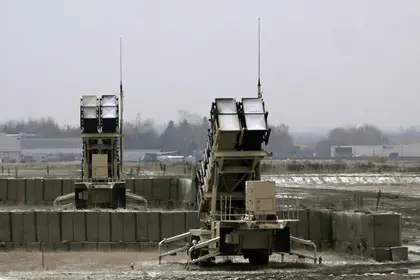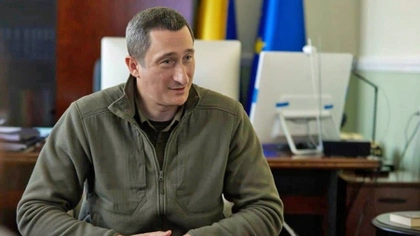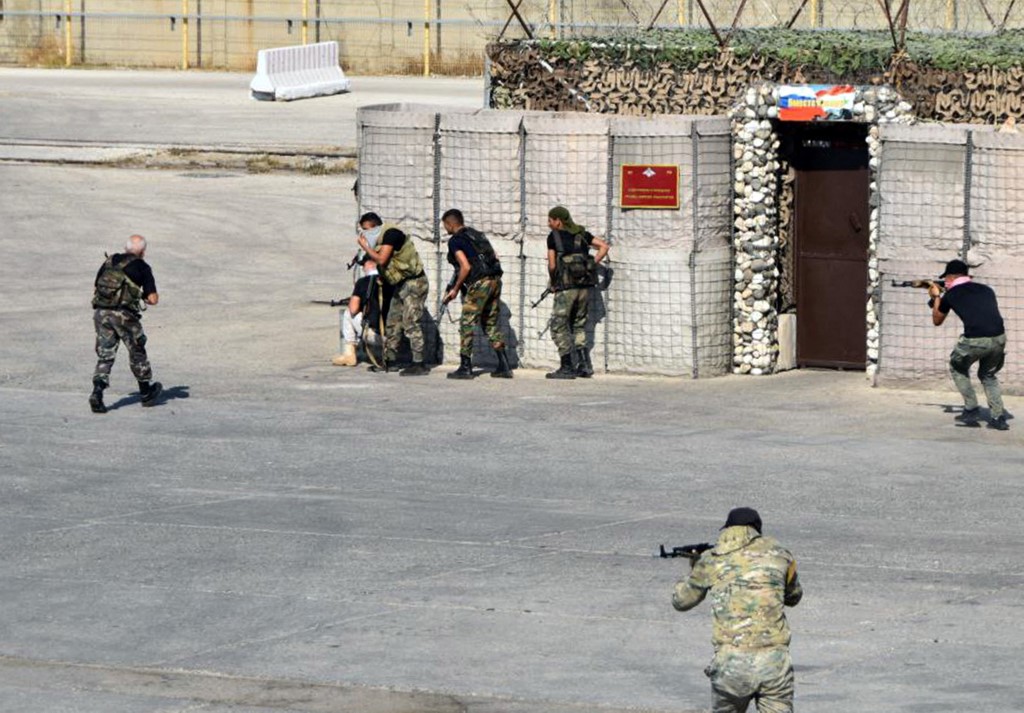A claim by Ukrainian army commander Oleksandr Syrsky that Russia’s forces “have not advanced a single meter in the past six days” in the critical Pokrovsk sector was innaccurate in some details but his main message that the Kremlin’s summer offensive in eastern Ukraine was running out of steam against strong resistance seems probable, Kyiv Post fact checkers found.
Syrsky, in an interview aired by the major US television broadcaster CNN on Thursday, said his forces had concentrated reserves in the Pokrovsk sector, that Ukrainian troops are holding their ground, and that the pace of Russian attacks was slowing.
JOIN US ON TELEGRAM
Follow our coverage of the war on the @Kyivpost_official.
“We are doing everything possible not to lose Pokrovsk. We have increased our defense capability in the area. Indeed, over the last six days, the enemy hasn’t advanced a single meter in the Pokrovsk direction,” Syrsky said. “We note that the amount of artillery shelling as well as the intensity of the offensive has decreased. (But) for us the Pokrovsk sector is (still) the most difficult.”


Kyiv Calls on NATO for 20 Advanced Air Defense Systems to Defend Power Grid
In Ukrainian military language, a “direction” commonly means a sector centered on a major city or geographical feature, and road and rail infrastructure supporting advances or retreats within the sector.
A Russian wide-front offensive kicked off in May in Ukraine’s eastern Donbas and has slowly advanced towards Pokrovsk, a key logistics and industrial center with a pre-war population of 76,000, along several routes.
Pokrovsk is one of four to six major Donbas cities the Kremlin wants to capture, as part of a campaign launched in summer 2022 to invade and annex Ukraine’s Luhansk and Donetsk regions. Since August, Russian attacks directly towards Pokrovsk city have driven from the southeast to the northwest along a major rail line and a parallel highway called the E50.
Along those two routes within the relatively narrow (5-7 km / 3-4 mile) attack sector aiming towards Pokrovsk, according to independent military information platforms tracking combat and media reports in Ukraine, the last confirmed Russian advance took place on Aug. 27, with the capture of the village of Novohrodivka after a five-day battle. Syrsky’s “not a meter” statement made on Sept. 5 was, within the confines of that one attack route, narrowly accurate, Kyiv Post researchers found.

However, those same sources and others widely confirmed Russia assaults widening the Pokrovsk salient elsewhere, at least technically contradicting Syrsky’s message to CNN that for almost a week Kremlin forces had come no closer to capturing the city.
The best-documented Russian ground gain in Ukraine’s Donbas region since Aug. 26, per independent tracking platforms like Deep State, took place some 12-15 km (7.5-9 miles) south of where Syrsky told CNN Russian attacks had been fully stopped.
Kremlin infantry backed by artillery and air strikes from Sept. 3-5 launched assaults capturing the rural hamlet Lyskivka and breaking into the village of Ukrainsk, those platforms reported. Both sides confirmed the Russian successes. Kremlin-sponsored military “reporter” Denis Shchukin in his RybarZ Telegram claimed Russian troops captured a 2 km (1.2 mile) by 3.2 km (2 mile) swath of territory.
Sources associated with Ukraine’s 21st Special Forces Battalion, an element of the formerly drill-and-ceremony Presidential Brigade, reported Ukrainian troops were fighting hard in the area to prevent further Russian advance, and on Friday were holding their ground.
Although not on a direct road route to Pokrovsk, the local Russian victories at Lysivka and Ukrainsk widened a 25 km (16 mile) salient captured by Russian forces in the Donbas region over the past two months, and increased risk of encirclement of major forces even further south, or capture of the city of Kurahove near Pokrovsk.
Syrsky’s upbeat “not a meter” comments to CNN did not mention those recent, for Ukraine, worrying, developments along the south face of that salient.

On the direct route to Pokrovsk on Friday, renewed Russian attacks and heavy fighting were reported by the village of Halytsynivka. Early, unconfirmed battle reports via milbloggers said Kyiv’s forces were holding. According to open sources reviewed by Kyiv Post, Syrsky and his staff over the past week transferred at least five combat brigades from other fronts or reserves to the Pokrovsk sector, but it was not clear what strength those units were.
Official Ukrainian army sources on Friday reported continuing combat across the Pokrovsk sector, with Kyiv’s forces repelling 37 ground attacks and fully half of the 181 exchanges of fire across the entire fighting front in Ukraine and Russia’s Kursk region, taking place in the vicinity of Pokrovsk or the neighboring city Kurhove.
Kyrylo Sazanov, a Ukrainian political scientist fighting as an army service member since 2022, in an Sept. 4 YouTube interview, said that Russian attacks against Pokrovsk are costing them heavy losses, but conceded Ukrainian forces make tactical retreats. There has been no Russian breakthrough in the Pokrovsk sector nor will there be, he said.
“They’re (Russian forces) crawling forward, but we call what they’re doing ‘two houses a day’,” Sazonov said. That’s nothing...the width of the front, on which they’re capable of functioning, it’s constantly shrinking…we can see that the resources that they’re attacking with, already aren’t enough to advance significantly.”
Russian milblogger Aleksei Zhivov, in Friday comments on Telegram, said Ukrainian defenses east of Pokrovsk will soon crack decisively.
“The Group of Forces Center under the command of (General Andrei) Mordvychev is working wonders. The liberation of Pokrovsk will force several fortified areas of the Ukrainian Armed Forces to wave the white flag immediately,” Zhivov wrote.”
Serhiy Dobryak, a senior Donetsk region police official, in a Friday statement, said Russian force units were intensifying air strikes against civilian settlements behind the fighting line, with Russian attack planes that day bombing the cities of Pokrovsk and Kurahove, and the villages of Gannivka, Vesely Hai, and Dobropilsk. Two adults were injured and houses and apartment buildings were hit. By midday power was still cut off to thousands of electricity consumers, Dobryak said.
Dobryak appealed to Pokrovsk’s remaining residents to evacuate the city while there still was time. A Friday announcement from the Ukrainian national rail operator Ukrzaliznytsia said that, as of Sept. 11, train service to the city would stop “because of the security situation.”
The railroad end of the line will shift to the city Pavlograd, Donetsk region head Vadym Fylashkin said in a Thursday statement. Some 26,000 people are still living in Pokrovsk, he said.
You can also highlight the text and press Ctrl + Enter






